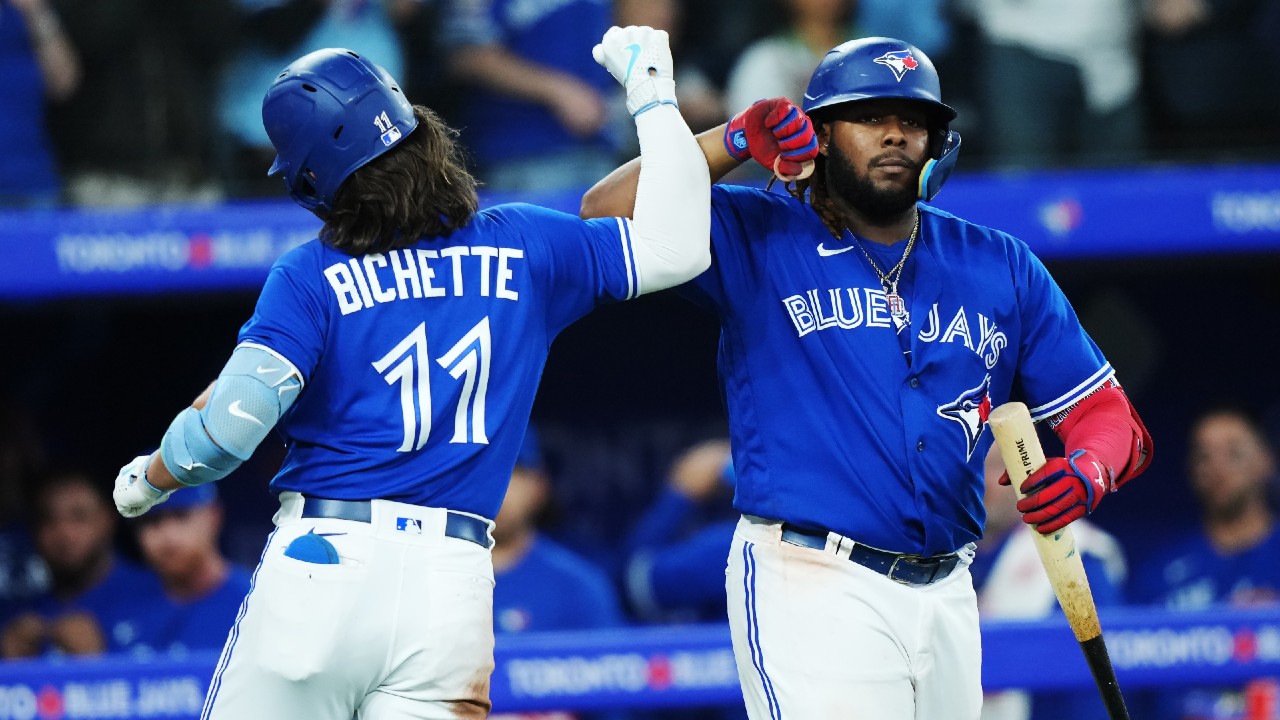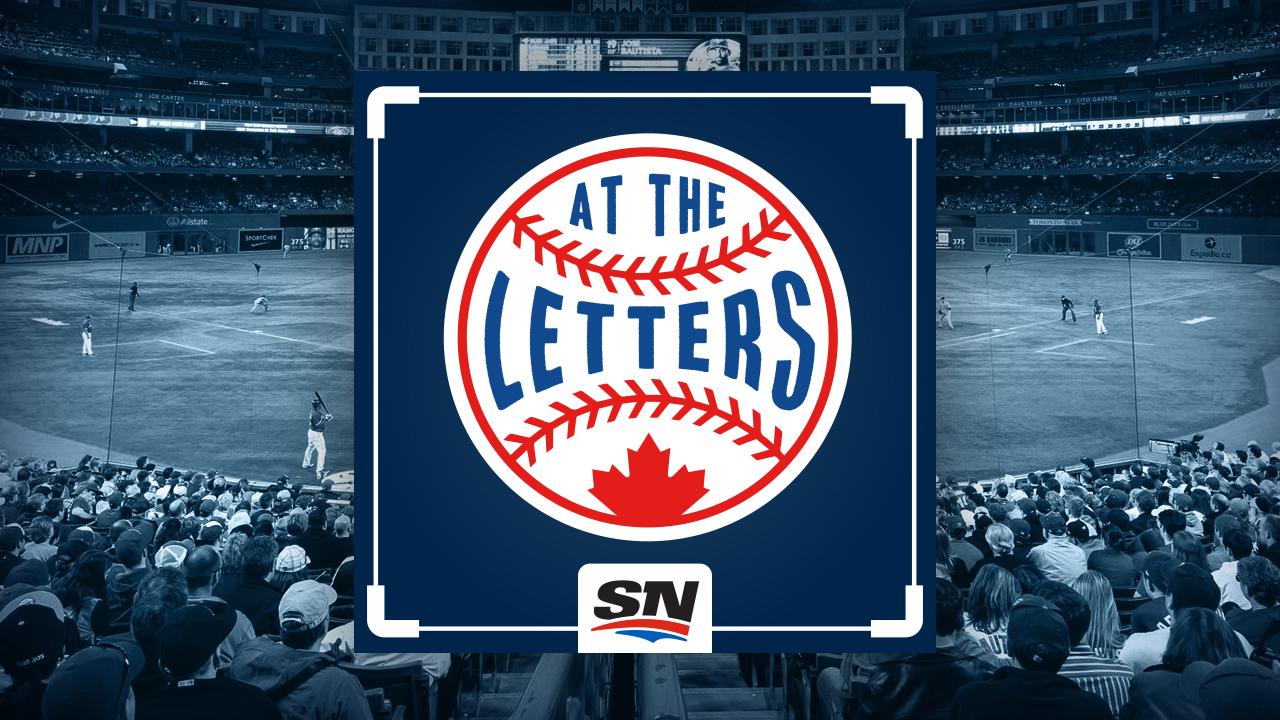Sports
Why Chris Bassitt has trust to position Blue Jays’ infielders – Sportsnet.ca

June 2, 2024, 9:58 AM
TORONTO – When Chris Bassitt pitches, he’s constantly looking for an edge.
He chooses his pitches deliberately, even shaking himself off at times while using PitchCom. He disrupts hitters’ timing, working the pitch clock to keep the opposition off balance. And, quietly, he’s also one of the few major-league pitchers who actively positions defenders behind him, moving them a few feet to one side with a flick of the glove or a pointed glance.
It’s reminiscent of how a quarterback might move offensive players with an audible in the seconds preceding a snap, but like everything Bassitt does on the mound, there’s purpose behind it. While the 35-year-old right-hander acknowledges the value of defensive analytics, there are also times where numbers don’t fully capture the nuance of what’s happening on the field. It’s in those moments that infielders like Bo Bichette and Davis Schneider know to look to the mound.
“He’s a smart pitcher,” Schneider says. “He’s been around the game a long time. He knows what hitters are trying to do and their tendencies. So I’m not really surprised. I listen to him. If he’s seeing something, I’m not going to question him. If he thinks the hitter’s going to hit one a little more towards that spot, I’m with him 100 per cent. Because the (positioning) cards only take you so far.”
Bichette says Bassitt repositions him “all the time” and has done so ever since joining the Blue Jays in 2023. But he acknowledges Bassitt’s gestures have gotten a little “more dramatic than normal” recently, leading others to notice.
Both Bichette and Schneider say Bassitt is the lone Blue Jays pitcher who repositions them. And while other veteran starters like Justin Verlander and Marcus Stroman are said by players to have positioned fielders on occasion, it’s a rarity in today’s game.
“If you do that, you have to execute,” says Blue Jays manager John Schneider. “It’s tough to out-smart (established) tendencies, but I’ve seen veteran guys do it.”
Pitching’s hard enough as it is — not just physically, but mentally, and job number one is making a quality pitch. Plus, teams devote lots of resources to obtaining the data that infield coaches use to position players. Defensive alignments are typically the product of lots of information, not happenstance or coaches’ whims.
Now in his 10th big-league season, Bassitt — set to start Sunday (1:37 p.m. ET / 10:37 p.m. PT) vs. the Pirates on Sportsnet — is aware of all that. As a rookie, he never attempted moving infielders around, but as he’s gained comfort on the mound and credibility from his teammates, he feels the freedom to do so on occasion.
“Analytics are very, very good and positioning wise it’s great (to have), but if I’m adjusting the way that I’m throwing or how I’m going to attack them, then I’ll also adjust the defence,” he says.
To understand Bassitt’s thinking better, let’s consider an example. The first time through the batting order, he gets a read on what hitters are trying to do against him — what they’re swinging at, what they’re taking and how their swings look. Then, as the game progresses, he adjusts his plan accordingly.
So, for instance, let’s say there’s a pull-heavy right-handed hitter at the plate. In this instance, the second baseman would be positioned up the middle, towards the base. But if that hitter shows a willingness to sit back on hard stuff and push the pitch the other way, Bassitt will motion the second baseman closer to first base.
“If (the hitter’s) willing to stay late on a fastball, well the odds are he’s going to shoot it more towards the four-hole, if I’m throwing a fastball,” Bassitt said. “So I try to take that side away, and hopefully his approach is like ‘that chance of me staying late on a fastball is now somewhat gone.’ It’s a lot of variables, but in the middle of it it’s pretty easy to calculate where things should be.”
That’s where the advantage is two-fold. First, a middle infielder like Schneider or Bichette will be positioned as well as possible considering the variables of the day, including the opponent’s game plan, the weather and who’s on base. And maybe more importantly, the gesture lets opposing hitters know Bassitt is onto them. Ideally, that gets them thinking in the batter’s box, disrupting their focus.
As for the infielders playing behind Bassitt, they know he has a reason for guiding them around the dirt, unconventional though it may be. And to be fair, it’s a conversation that goes in both directions, with infielders and coaches chiming in during pre-game meetings.
“I don’t want to take a lot of credit for this,” Bassitt says. “A lot of things are adjusted in the dugout that people just don’t see.”
“He also empowers me to play where I want to,” Bichette adds. “He always tells me, ‘if you ever feel anything, just go ahead and do it.’ But at the end of the day, he’s the one controlling the game, so if he wants me in a certain spot, then that’s where I should be and no one should have any issues with that.”
Of course, there are limits to how far Bassitt’s influence extends. George Springer says he’s never gotten a directive from Bassitt in the outfield, and John Schneider says he’d like to see it stay that way.
But on the infield, Bassitt has all the buy-in he needs to make those subtle adjustments as needed. It’s not for everyone — as his manager puts it, “Chris is a little bit of an outlier” — but it works for him. And underlying this particular tendency is the drive to find a small edge and turn it in his favour. If there’s ever another advantage to be found, you can be sure Bassitt will look for it.
“That’s the thing with Chris,” Schneider says. “Nothing really surprises you”



)






